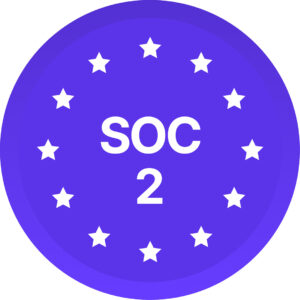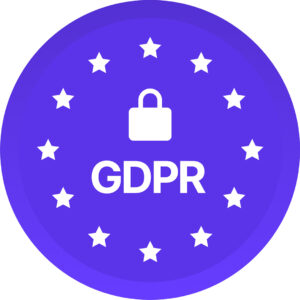October is National Disability Employment Awareness Month. This month serves as a time to acknowledge the contributions of disabled individuals in the workplace, while also acknowledging that there is still so much work to be done to remove workplace barriers to people with disabilities. Although disability inclusion has improved in the workplace, people living with disabilities still face challenges and barriers in getting jobs that they are qualified for, being compensated equally and fairly, as well as other jobs, location, and industry-specific barriers.
There are many events taking place this month to promote disability inclusion, and I encourage you to look at the events in your area and/or industry and to attend at least one event this month.
Disability and the Labour Market
People with disabilities are the most under-utilized labour market. Did you know that:
• In Canada, over 400,000 working-age adults living with physical or mental disabilities are currently unemployed, despite being willing and able to participate in the paid labour force (Till et al. 2015).
• In 2017, one in five (22%) Canadians aged 15 years and over – or about 6.2 million individuals – had one or more disabilities.
• Among those aged 25 to 64 years, persons with disabilities were less likely to be employed (59%) than those without disabilities (80%).
• Despite numerous positive stories and experiences, persons with disabilities remain less likely than others to be employed, both in Canada and other parts of the world.
• Approximately 1 in 2 university graduates, with or without a disability, held a professional occupation; however, graduates with a disability were less likely to hold a management position and earned less than those without a disability – especially among men.
Making an Inclusive Hiring Process
Many hiring and recruiting practices and processes that are considered ‘traditional’ have a lot of barriers rooted throughout for people with disabilities. Examples include:
• Vague and/or inaccessible language used in job descriptions and ads,
• Requiring employees to have a valid driver’s license, and
• Asking questions exclusively through verbal communication in interviews.
In each of these examples, a few helpful questions to consider while assessing the inclusivity of hiring and recruitment practices are:
• Does the job description clearly outline the roles and responsibilities of the position? Are the job requirements distinguishable from the nice-to-haves? Does the job description include a statement about being an equal-opportunity employer?
• Does the person have to drive a car to fulfill their job duties? Or is driving required only for getting to the office?
• Do interviews take place solely in person? Or is the option to have a remote interview included? In remote interviews, are closed captions enabled for all attendees? Are questions provided in advance of the interview, to allow time for processing?
Improving disability inclusion in the workplace begins with inclusive hiring practices.
Ableism and the Barriers it Creates
While inclusive hiring practices make jobs more accessible for those living with disabilities, ableism remains a huge problem in the workplace and creates a lot of barriers to long-term employment. Ableism is the conscious and unconscious discrimination against those with disabilities, in favour of able-bodied individuals.
There is a lot of unconscious bias against people with disabilities that undermine their abilities in the workplace. Even the language used in the workplace among co-workers or management can be ableist. For example, a person might say, “You’re acting so bipolar today,” to their colleague, who may or may not be living with a disability. This is a case of mental ableism, which is also commonly ignored, as many people do not consider mental health issues a disability. Further, these terms have been thrown around for so long, that people often do not realize the impact that statements such as these have.
Benefits of Hiring and Retaining Disabled Talent
There are many benefits to hiring disabled talent. Some of the benefits include:
- Enhanced job performance and work quality,
- An inclusive workplace attracts the best and brightest employees,
- Increases company morale, and
- Access to more diverse markets and customers.
And while there are benefits to hiring disabled talent, retaining them is just as important and advantageous, for employers as well as employees. Everyone should be given a chance to demonstrate how their unique offerings and skills can enable them to contribute to a company and industry, while also being able to be themselves, without fear of discrimination or judgment for their disability.
When companies retain their diverse and disabled talent, some of the benefits they can expect to see are:
• Increased innovation,
• Improved productivity,
• Reduce turnover rates,
• Competitive advantages, and
• Increased revenue growth.
This is not a comprehensive list of the benefits of retaining disabled talent in the workplace, as there are so many more benefits beyond this list. But at the end of the day, striving to retain disabled talent is the bare minimum that an organization can do to improve their inclusion practices.
About Accessible Creates
For more tips, tricks, and training, feel free to reach out to me at accessiblecreates@gmail.com or review offerings at accessiblecreates.ca. I provide remote workshops and consulting for companies all across Canada, to help them become more accessible and inclusive. I am passionate about issues of neurodiversity, disabilities, and accessibility through a human approach and human resources and intersectional lens.
NOTE: In an effort to shed light on a variety of topics and from various perspectives within the DEI space, we have collaborated with external contributor, Sydney Elaine Butler. As such, the views expressed in this article are those of the author and do not necessarily reflect those held by Diversio.
References
- Choi, R. (2021). Accessibility Findings from the Canadian Survey on Disability, 2017. Canadian Survey on Disability Reports.
- Statistics Canada. https://www150.statcan.gc.ca/n1/pub/89-654-x/89-654-x2021002-eng.htm.
- Inclusion Canada. (n. d.). Employment. https://inclusioncanada.ca/campaign/employment/.
- Statistics Canada. (2022). Mental Health-Related Disability Rises Among Employed Canadians During Pandemic, 2021. The Daily. https://www150.statcan.gc.ca/n1/daily-quotidien/220304/dq220304b-eng.pdf.
- Turcotte, M. (2014). Persons with Disabilities and Employment. Insights on Canadian Society. Statistics Canada. https://www150.statcan.gc.ca/n1/en/pub/75-006-x/2014001/article/14115-eng.pdf?st=EB_mq7mq.

